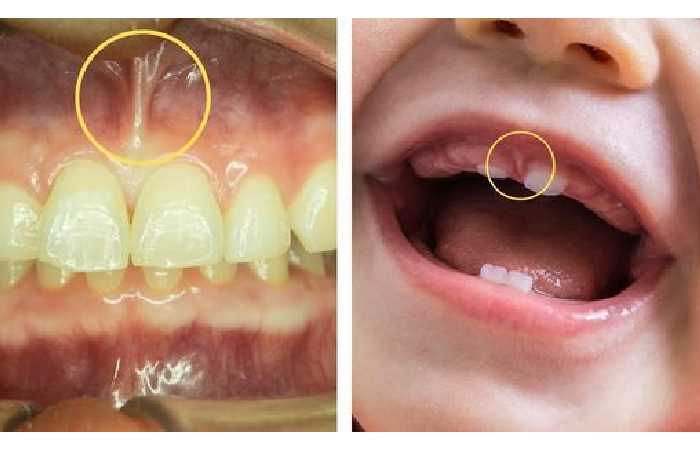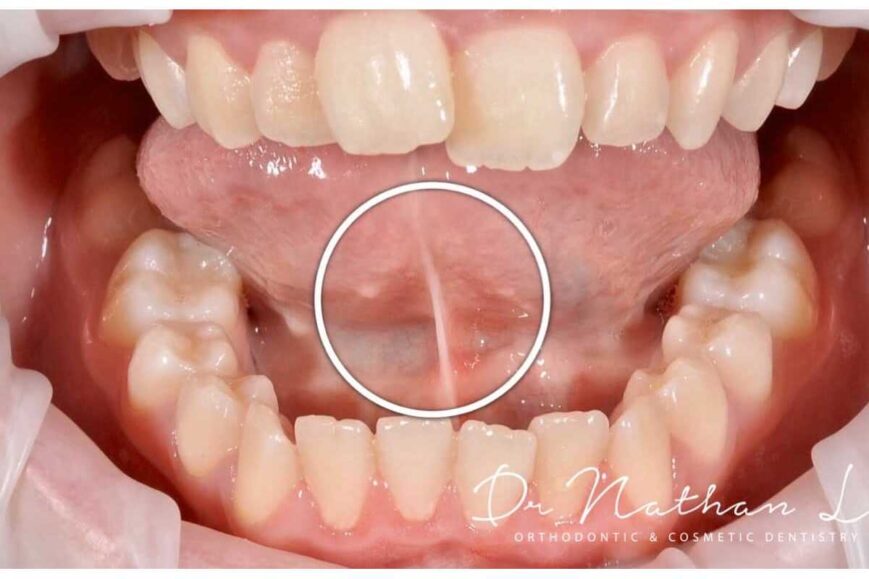Tongue Tie Vs. Normal Adults – Tongue tie is a common issue that usually restricts the tongue’s functioning in infants. Tongue tie vs. normal tongue has a band of tissue attached between the mouth floor and the tongue, named the lingual frenulum.
The condition is likely to cause a few side effects from an early stage, and these symptoms may be overcome as you grow.
So, in this article, we will share how to distinguish between individuals with tongue ties and those without them.

Symptoms of Tongue Tie:
Pediatricians and doctors recommend treating the tongue early to prevent problems due to this natural disorder. The first step is to evaluate and diagnose the tongue.
It is only possible when your infant shows signs and symptoms of tongue tie.
Additionally, the chances are high that you live with it without knowing your baby is facing some tongue difficulties.
Without knowing the signs, parents can’t diagnose the difference between tongue tie and normal tongue in babies.
Here are all the signs that parents must notice after delivery:
1: Tongue functionality
If your baby has a tongue tie, they may have difficulty moving it.
Moreover, it disturbs the mobility and functionality of their tongue, and performing a simple task seems challenging.
Due to limited functionality, babies and adults with tongue ties may find it difficult while:
- Speaking
- Kissing
- Eating
- Breathing
- Drinking
2: Difficulty in latching
Latching the feed becomes a challenge for the kids with tongue ties. Babies can’t nurse properly with tongue tie restrictions.
Hence, they stay hungry and annoyed, and parents fail to understand why their baby is crying.
3: Speech development
If the problem remains undiagnosed in the kids, there is a chance that your kid may develop speech issues.
For instance, it becomes difficult for kids to pronounce r,s,t,d, and l sounds daily.
Sometimes, people are diagnosed with tongue tie later in life.
Teens come with this issue, expressing concerns about tongue movement in their mouth’s upper and front portions.
Additional symptoms include:
- Jaundice
- Poor positioning
- A recessed jaw
- Trouble sticking the tongue
- It is hard to lift the tongue to the roof of the mouth
What Does A Tongue Tie Look Like?
The primary difference between tongue ties and normal tongues in kids and adults is their appearance.
In this condition, the tongue is tied to the lower part of the mouth with lingual frenum, called “ankyloglossia.”
The tongue tie is easily visible and goes to the tongue tip. In this context, the tongue gives a heart shape, which is evident when you lift your tongue.
Furthermore, they may not lift and move in the mouth quickly.
If it raises, it doesn’t extend past the lower gum line. So, check tongue ties vs. normal pictures to understand better what it looks like.
Apart from the appearance that makes it distinct, there is a type known as posterior tongue tie and regular tongue that is not readily observable. It remains hidden under the tongue floor and makes the tongue appear shorter.
Additionally, it affects tongue movement and functionality in lifting and extending while speaking and eating.
How to Assess Tongue Tie at Home?
The best way to diagnose tongue tie is to perform an early assessment at home that involves a few basic steps to check the tongue’s functionality.
In this assessment, perform the following steps:
- Open the mouth and try to touch behind the upper teeth by uplifting the tongue.
- Open the baby’s mouth and try to lift their tongue with your hands.
- Touch the lower part of the tongue to check if there is a lingual frenulum.
- Tongue ties and normal tongues in adults are easy to evaluate with a complete procedure in front of the mirror.
- Get along with a tongue-tie specialist for a thorough assessment.
How Does It Feel Living with Tongue Tie and Normal Tongue?
As people develop and grow over time, tongue anatomy keeps changing. Moreover, there is a chance that you may not have tongue tie during the early years of life, but you may develop it later in life.
With any difficulty in breathing, sleeping, eating, or speaking, make sure to evaluate tongue ties in the first place.
The babies show signs of tongue tie in the form of not latching to mother feed, speech development, and eating difficulties.
However, the tongue tie symptoms in adults are fewer and may not be evident.
Studies reveal that 4-6% of the population with tongue tie remain asymptomatic for years.
Further, living with the tongue tie may remain undiagnosed for adults, but treating it as early as possible is much needed.
Treating the issue as soon as possible can save you from oral problems, infections, jaundice, and other health issues.
Frequently Asked Questions (FAQs)
What is the difference between a tongue-tie and a normal tongue?
A tongue tie appears as a heart-shaped tongue with restricted movement and is not lifted easily.
On the other hand, a normal tongue is straight and is freely moveable to different areas of the mouth.
How do I know if I’m tongue-tied?
If you are facing difficulty breathing, eating, or speaking and lifting your tongue, there are cases in which you have developed a tongue tie.
Try to assess your mouth in front of the mirror. Also, look for professional help.
It is evident if you see your tongue attached to the lower part of your mouth with a tissue.
Should tongue-tie be corrected?
Yes, the treatment for tongue tie is essential to protect you from unwanted oral and health issues.
Treating such defects at an early stage can prevent you from long-term health conditions and complications.
Is tongue-tie a congenital disability?
Yes, in infants, it is a defect by birth, but it is easy to treat with advanced technology known as frenectomy. But, later in the years, it can also develop in adults.


